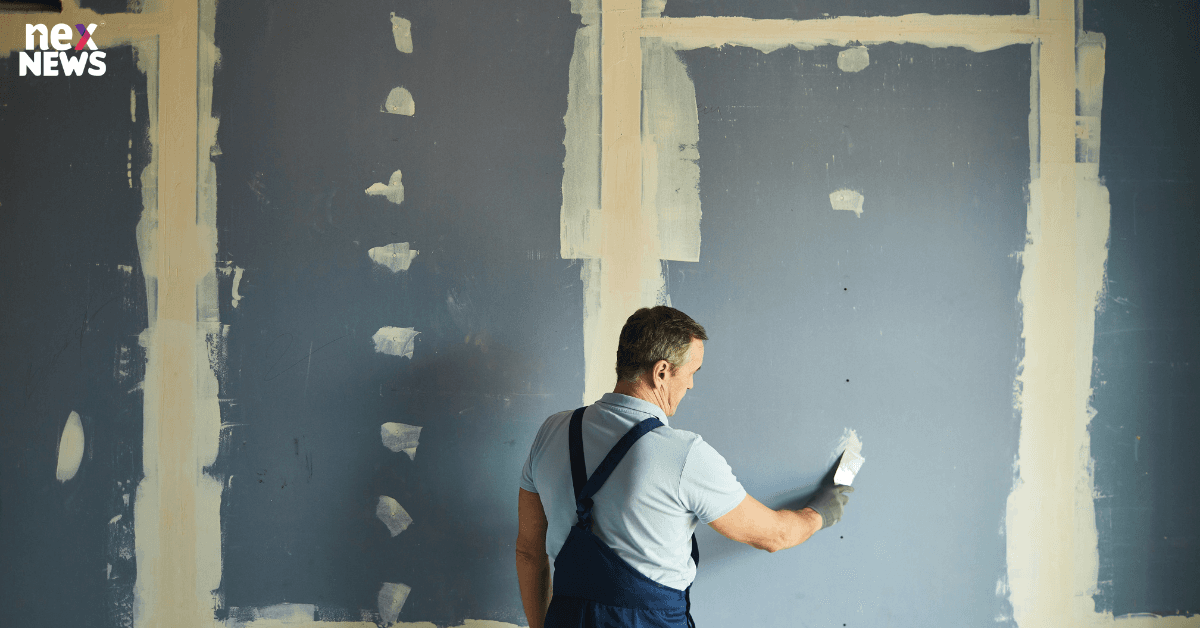The world of construction materials is vast, and two contenders often take center stage: drywall and plaster. Understanding the nuances between these two is crucial for anyone involved in building or renovating a space. Let's embark on a journey to explore the differences, applications, and considerations that come with choosing between drywall and plaster.
Introduction
In the realm of construction, drywall and plaster are household names, each with its own unique set of characteristics. Drywall, also known as gypsum board, and plaster, a traditional building material, serve as integral components in creating walls and ceilings. The importance of discerning between these materials cannot be overstated, as they have distinct qualities that impact aesthetics, durability, and functionality.
Historical Context
To comprehend the divergence between drywall and plaster, a glimpse into their historical contexts is essential. Plaster, with its roots tracing back to ancient civilizations, has adorned walls for centuries. Its application involves a meticulous process of layering and smoothing, resulting in a polished finish. On the other hand, drywall is a relatively modern invention, emerging in the early 20th century as a more convenient alternative to traditional plaster.
Composition and Materials
Delving into the composition, plaster is primarily a mix of gypsum, lime, sand, and water. This concoction creates a robust material with excellent adhesion properties. In contrast, drywall comprises gypsum sandwiched between layers of paper, offering a lightweight and easily installable solution.
Installation Process
The installation processes for plaster and drywall are markedly different. Plaster demands skilled artisans who apply multiple layers, allowing each to dry before the next is added. Drywall, however, follows a simpler approach—sheets are hung and secured, and joints are sealed for a smooth surface. This variance in installation complexity can influence project timelines and costs.
Durability and Strength
When it comes to durability, plaster is renowned for its robustness, capable of withstanding years of wear and tear. Drywall, while generally sturdy, may be more susceptible to damage. Understanding the specific needs of a space, such as the expected level of activity, is crucial in determining which material aligns better with durability requirements.
Cost Comparison
While plaster exudes a timeless elegance, it often comes with a higher price tag due to the skilled labor involved. Drywall, being more standardized in its application, tends to be more cost-effective. However, long-term financial considerations, including maintenance and repairs, should also factor into the cost analysis.
Aesthetics and Finishing
The aesthetic appeal of plaster is unparalleled, with its smooth, textured finishes adding a touch of sophistication. Drywall, though lacking the historical charm of plaster, offers versatility through various finishing options. The choice between the two may boil down to personal preference and the desired ambiance of the space.
Maintenance and Repairs
Maintenance requirements diverge significantly between plaster and drywall. Plaster may demand periodic touch-ups and repairs, especially in high-traffic areas. Drywall, while susceptible to dents and dings, allows for straightforward patching, making it a more convenient option for those seeking low-maintenance solutions.
Insulation Properties
Considering insulation, plaster boasts natural insulation properties, providing some temperature regulation. In contrast, drywall, when coupled with proper insulation materials, contributes to energy efficiency and soundproofing. Understanding the specific needs of a space, such as the expected level of insulation, is crucial in making an informed decision.
Environmental Impact
In the age of eco-conscious construction, the environmental impact of building materials is a significant consideration. Plaster, being composed of natural materials, is often viewed as more environmentally friendly. Drywall, while not as inherently green, can be sourced from recycled materials, adding a layer of sustainability to its profile.
Popularity and Usage
The popularity of plaster harks back to traditional construction, where skilled craftsmen would painstakingly create intricate designs. In modern architecture, however, drywall dominates due to its efficiency and cost-effectiveness. The choice between plaster and drywall often depends on the project's context, aesthetic goals, and budget constraints.
Soundproofing
For those seeking acoustic benefits, plaster's dense composition lends itself to sound absorption. On the flip side, drywall's layered structure, especially when coupled with additional insulation, contributes to effective soundproofing. Considerations such as the intended use of the space and desired noise levels will influence the choice between these materials.
Moisture Resistance
Moisture resistance is a critical factor, especially in areas prone to humidity. Plaster, when applied correctly, exhibits reasonable resistance to moisture. Drywall, while susceptible to water damage, can be enhanced with moisture-resistant variants, making it suitable for bathrooms and kitchens.
Fire Resistance
In the realm of safety, plaster has a natural advantage in fire resistance. Its composition makes it inherently fire-retardant. Drywall, while not as fire-resistant by default, can be augmented with specialized coatings to meet fire safety standards.
Conclusion
In conclusion, the choice between drywall and plaster is not a one-size-fits-all decision. It hinges on factors such as project requirements, aesthetic preferences, and budget considerations. Understanding the historical context, composition, installation processes, and specific attributes of each material empowers individuals to make informed choices, ensuring the longevity and functionality of their spaces.

POST A COMMENT (0)
All Comments (0)
Replies (0)